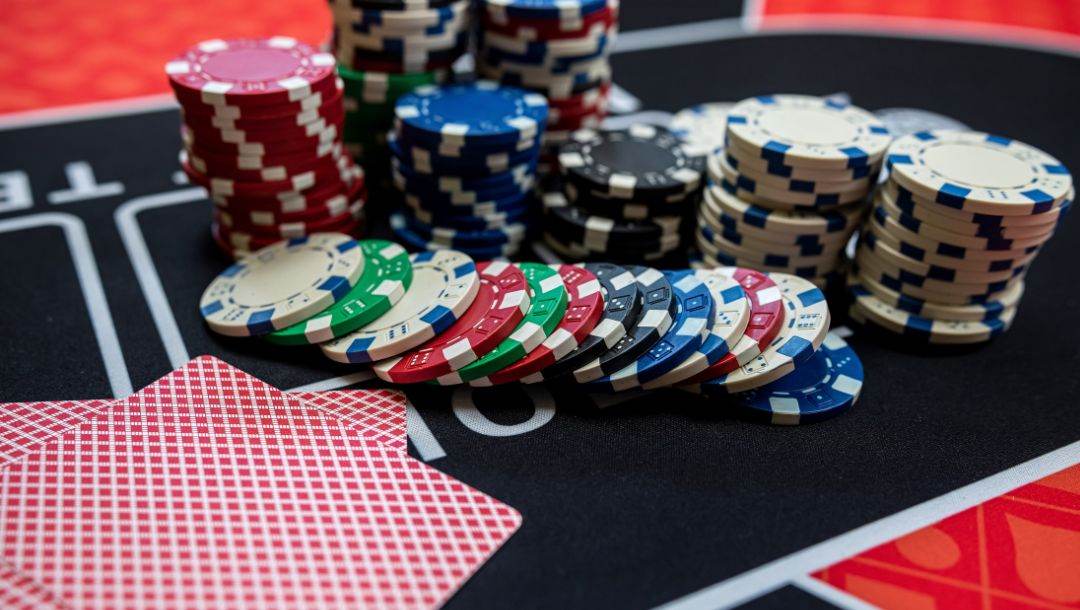
Minimum defense frequency and pot odds are two important concepts to master if you want to strengthen your poker strategy.
When faced with a bet in poker, you can react in one of three ways: call, fold, or raise. It’s usually apparent when it’s time to raise; super strong hands want to extract value, while your bluffs are an effort to steal the pot. Whether to call or fold, on the other hand, is often not so clear and this is where MDF and pot odds are helpful.
Read on for a more comprehensive explanation of these two concepts, which are often showcased in poker tournaments by the best players in the poker world.
Defining Minimum Defense Frequency
Poker minimum defense frequency is the minimum percentage of hands you must not fold to a bet to prevent the aggressor from profiting by always bluffing you. If your folding frequency is more than what the MDF indicates, your opponent can exploit you by over-bluffing when they bet.
If you want to play higher-stakes poker and face very tough competition or take part in poker tournaments, you’ll need to understand MDF poker and practice this concept while studying to ensure you don’t get exploited by the best players out there.
Defining Pot Odds

MDF has a very important place in poker strategy. This is especially true when you’re up against very strong players in heads-up poker and other game formats like Texas Hold’em online. (But that does mean you won’t always have to use it when facing your average opponent.)
A much simpler way to play when facing bets is to look at your pot odds, estimate your opponent’s range, and make a decision on whether your hand has enough equity to call against that range.
So, instead of having to figure out your MDF and playing a mixed strategy with various hands, you can simply always fold or always call with hands that do or don’t have enough equity when facing a bet.
When To Use Minimum Defense Frequency
Suppose that there are 100 chips in the pot, and the aggressor bets 100. How often should you call?
MDF approaches this question from the aggressor’s perspective. They are betting 100 to potentially win the 100 in the pot, giving them ±100 odds, even if their hand has zero equity (i.e., no chance of beating your hand). Then, if you, the hero, fold more than 50% of the time, the aggressor comes out ahead.
In a heads-up battle, the hero needs to call (or raise, but not fold) at least 50% of the time. The hero can spin a coin or preferably choose the best 50% of hands in their perceived range at that point to continue with, regardless of what the aggressor holds.
When To Use Pot Odds
Pot odds poker, on the other hand, approaches the same scenario from the hero’s perspective. There is now 200 in the pot, and the hero needs to put in 100 to call.
You are getting +200 odds and need to win 33% of the time to make a profit. Therefore, you need to compare your hand with the perceived average hand strength (“range”) of the aggressor.
Will you win 33% of the time? With pot odds, you are considering what the aggressor holds.
How To Calculate MDF

Calculating minimum defense frequency in poker is simple if you use the formula in this poker cheatsheet or MDF calculator:
MDF = pot size / (pot size + bet size).
For example:
MDF = 100 / (100+50)
MDF = 100 / 150
MDF = 0.67
To get your MDF percentage, all you need to do is multiply this number by 100. In this case, you should play 67% of your range, which is always the case when facing a half-pot bet.
Once you calculate your poker MDF, you will work with a solver to determine which hands fall into that 67% category and which hands would be best to call when facing this bet.
How To Calculate Pot Odds
In order to calculate your pot odds, you will use the following formula:
Pot odds = bet size / (pot size + bet size + call size)
Pot odds = 50 / (100 + 50 + 50)
Pot odds = 50 / 200
Pot odds = 0.25
You will need to multiply this final number by 100 to get a percentage, in this case, 25%. So, when facing a 50% pot-sized bet, you must have 25% equity against your opponent’s range to make the call profitable.
What that means is if your opponent is likely to bluff a lot, you should be more willing to call with weaker hands to see if they’re bluffing. If your opponent usually has strong hands, you should be careful about calling with weaker hands, as the chances of winning are slimmer.
When To Avoid Using MDF
As mentioned, you will rarely use MDF, but there are situations where you should definitely avoid using MDF.
1. When Defending Against Bets on the Flop
When you defend the big blind, you’re often in a weaker position, and the player who bet first can take advantage of that.
2. When Your Opponent Cannot Have Natural Bluffs
Don’t try to remain unexploitable by bluffs when your opponent doesn’t have any obvious hands to bluff with.
3. When You Are Playing Against Weak Opposition
Rather use an exploitative strategy, not an aggressive one, which can also mean folding more than usual when your opponent doesn’t bluff enough during certain moments in the game.
Practise Your Poker Strategy With BetMGM
When thinking about MDF and pot odds, you should always consider the style and range of your opponent before making a decision. Register with Bet MGM for a wide selection of online casino games. Play poker online and sharpen up your strategies.
Minimum defense frequency and pot odds are two poker concepts crucial to a good poker strategy. Discover what these concepts mean and when to use them.


